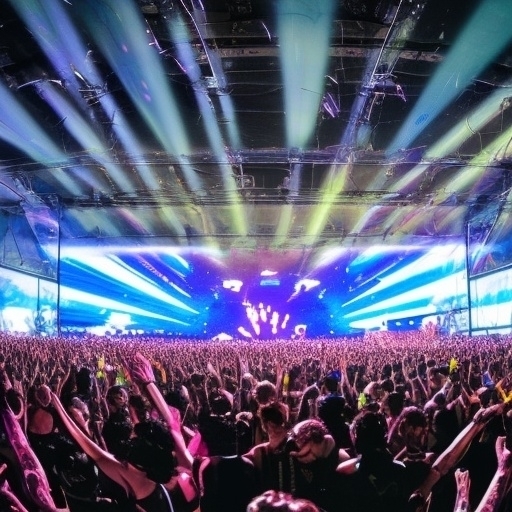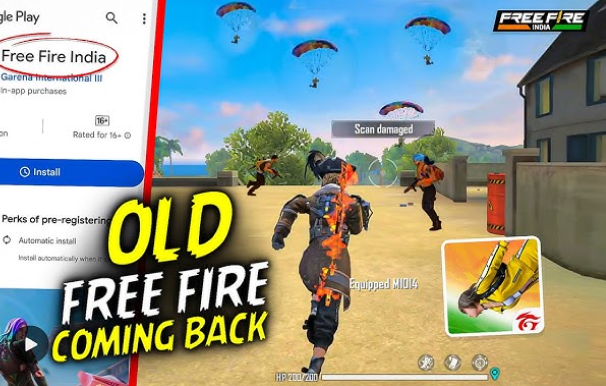Visual art is a powerful form of expression that can captivate audiences, create immersive experiences, and challenge conventional boundaries. VJs and visual performers are artists who use various technologies and techniques to create live or recorded visuals, often synchronized with music or other media. They can work in various settings, such as concerts, festivals, clubs, theaters, museums, or online platforms.
However, being a VJ or a visual performer is not an easy career path. It requires constant creativity, innovation, adaptation, and resilience. In this article, we will explore some of the challenges and opportunities that VJs and visual performers face in a changing world, and offer some suggestions on how to stay current and financially stable in today’s space.
Challenges for VJs and Visual Performers
One of the main challenges for VJs and visual performers is the competition in the field. With the advancement of AI technology, it is becoming easier for people to generate art using tools like Jasper Art, DALL-E 2, or Midjourney. These tools can produce high-quality, realistic, or abstract images from text prompts, or transform existing images into different styles. While these tools can be useful for inspiration or experimentation, they can also pose a threat to the originality and value of human-made art.
Another challenge for VJs and visual performers is the uncertainty of the market. The demand for visual art can fluctuate depending on the trends, preferences, and budgets of the clients or audiences. Moreover, the COVID-19 pandemic has severely affected the live events industry, forcing many VJs and visual performers to cancel or postpone their gigs, or switch to online platforms. This can result in a loss of income, exposure, and networking opportunities.
A third challenge for VJs and visual performers is the complexity of the technology. VJs and visual performers need to master various software and hardware tools, such as video projectors, cameras, sensors, controllers, mixers, and synthesizers. They also need to keep up with the latest developments and innovations in the field, such as new formats, platforms, algorithms, or techniques. This can be costly, time-consuming, and overwhelming.
Opportunities for VJs and Visual Performers
Despite these challenges, there are also many opportunities for VJs and visual performers to thrive in a changing world. Here are some of them:
Collaboration: VJs and visual performers can collaborate with other artists, such as musicians, dancers, actors, or writers, to create multidisciplinary projects that can appeal to a wider audience and showcase their skills and talents. They can also collaborate with other VJs and visual performers, to exchange ideas, feedback, and resources, or to form collectives or networks that can support each other and increase their visibility and reputation.
Diversification: VJs and visual performers can diversify their portfolio and income sources by exploring different genres, styles, themes, and formats of visual art. They can also offer their services to different sectors, such as education, entertainment, advertising, or social causes, that can benefit from their expertise and creativity. They can also create their own products, such as tutorials, courses, books, or merchandise, that can generate passive income and showcase their knowledge and experience.
Innovation: VJs and visual performers can innovate their art by experimenting with new technologies, techniques, or concepts that can enhance their expression and communication. They can also use AI tools as collaborators or assistants, rather than competitors, to generate new ideas, refine their work, or automate some tasks. They can also use AI tools as a source of inspiration or challenge, to create art that can respond to, critique, or surpass the AI-generated art.
Suggestions for VJs and Visual Performers
To take advantage of these opportunities, here are some suggestions for VJs and visual performers to stay current and financially stable in today’s space:
Build a strong online presence: VJs and visual performers should build a strong online presence that can showcase their work, attract clients or audiences, and connect with other artists. They should create a professional website, portfolio, and social media accounts that can display their art, skills, and personality. They should also use online platforms, such as YouTube, Twitch, or Instagram, to stream or share their live or recorded performances, and engage with their fans or followers.
Learn new skills and tools: VJs and visual performers should learn new skills and tools that can improve their art, efficiency, and versatility. They should keep up with the latest trends and developments in the field, and learn how to use new software, hardware, or algorithms that can enhance their visuals. They should also learn how to use online tools, such as Zoom, OBS, or Discord, that can enable them to perform or collaborate remotely.
Seek new opportunities and challenges: VJs and visual performers should seek new opportunities and challenges that can expand their horizons, expose them to new audiences or clients, and test their limits. They should apply for grants, residencies, or competitions that can fund their projects, provide them with resources or mentorship, or reward them with recognition or prizes. They should also participate in festivals, exhibitions, or workshops that can showcase their work, network with other artists, or learn from experts.
Conclusion
VJs and visual performers are artists who use technology to create stunning visuals that can enrich the cultural and creative landscape. However, they also face many challenges in a changing world, such as competition, uncertainty, and complexity. To overcome these challenges, they can leverage the opportunities that the world offers, such as collaboration, diversification, and innovation. They can also follow some suggestions, such as building a strong online presence, learning new skills and tools, and seeking new opportunities and challenges. By doing so, they can thrive as VJs and visual performers, and make a lasting impact with their art.






Discussion (2)
Great insights Grig! Keeping up with new tech and tools can be a challenge, but during challenging times that work pays off.
@seanbowes well... it's a subject that is a lot on my mind. i see great deal of innovation coming from sets of real time tools with additions of ai LLMs that if acted upon appropriately will make a huge shift towards how visuals arts are created and performed and applied to various spectrums.
without a question, - seeing combinations of realtime game engines and ai / machine learning tools that are rising up are the one to watch and act upon.
as industry has been growing and tools and technology is fastly innovating, we must put energy towards learning and adopting it as soon as we can.
more on that later